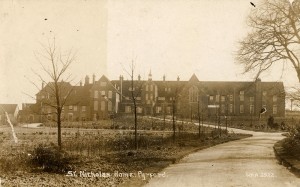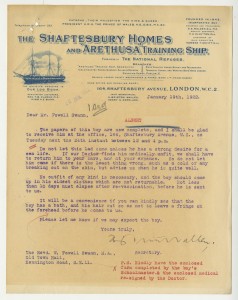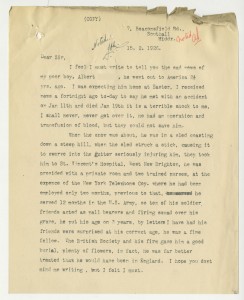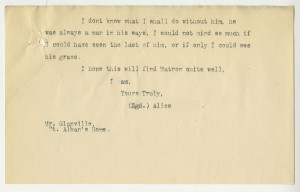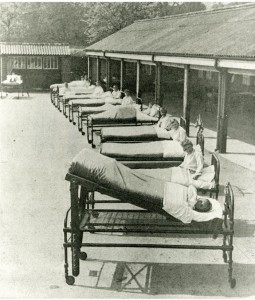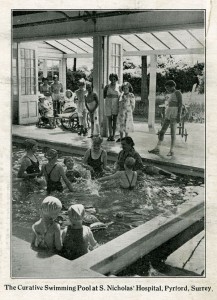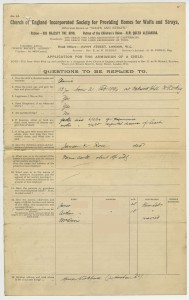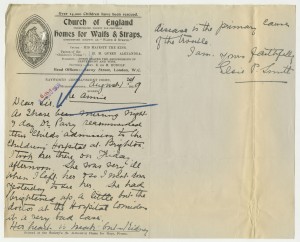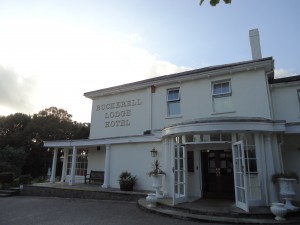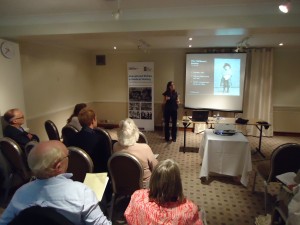Have you ever thought you’d like to work in archives? You could be just about to enter the world of work or thinking about a career change; could archives be the career for you?
A few weeks ago, as part of The Children’s Society Archive’s Unexplored Riches in Medical History project, I gave a talk to students at Kingston University, describing what it’s like to be an archivist and how you can get into the profession. Here’s a summary of what I told them:
Why work in archives?
This is a question that only you can answer for yourself! But if you need some suggestions, here are a few of mine:
Firstly, a lot of archivists really like working with archival documents; I know I do. There’s nothing quite like holding a piece of history in your hands and thinking about who created it and what it meant to them. Like the letter below:
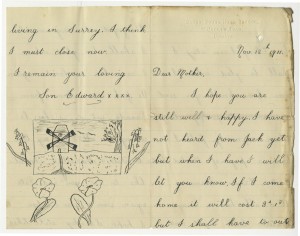

November 12th 1911.
Dear Mother,
I hope you are
still well & happy. I have
not heard from Jack yet
but when I have I will
let you know. If I come
home it will cost 3s 1d
but I shall have to out
how long I can stay. I
shall be glad when I can
come home. Could you send
me some stamps. My stamp-
-album is nearly full. I
have a page of United States,
Austria, France & Germany.
We all had a magic-
lantern last night and
I enjoyed it very much.
I shall be glad when
I can live in London again.
As Jack come home from
Canada yet, or, is (his) he
coming at all. Give my love
to Kate & Harriett. I should
like to see you and Kate
again soon & also Gladys.
I hope Stanley still likes
living in Surrey. I think
I must close now.
I remain your loving
Son Edward xxxx.
It’s hard to read this letter without feeling some kind of connection to 13-year old Edward, with his drawing and stamp-collecting and hopes for his family. Read the rest of Edward’s story here.
Every archival document, just like this one, is unique and has its own story to tell. As an archivist, you’ll find yourself discovering those stories and learning all the time.
You may also want to become an archivist to work with people and to help people. Archives exist to look after documents so that people can read and use them, so a large part of your job as an archivist will be helping people to access documents and to understand them. If you think that being an archivist involves interacting only with documents and not with people, you’ll have to think again.
But archivists don’t just look after documents for people in the present; they also act as custodians to protect documents so that people in the future will be able to read them too (perhaps even hundreds of years into the future!) In this way archivists are really important: what we do not only affects how we understand ourselves today, it affects how people of the future will understand us as well.
What do archivists do?
The main things that archivists do can be grouped into three categories:
- Providing access to collections
- Preserving documents
- Developing collections
Providing access to collections can come in many shapes and sizes. You could be working in a reading room, directly helping researchers to find documents, read them and understand the context they were created in. Or you could be answering questions that come in through emails and on the phone. Then there are other ways of providing access: running activities for school groups, for example, creating exhibitions, or writing web pages and blogs (hmm, that last one sounds familiar somehow).
Not to mention, it’s impossible to provide access to your documents if you don’t know what you have in the first place. Cataloguing your collections to create a database or list of all the documents you look after is really important; as an archivist, you’ll be rather stuck without a catalogue.
And then there’s preserving documents. As I’ve already mentioned, archival documents aren’t just important to us today, they’re important for future generations too; so archivists try their hardest to keep their documents in good condition and readable.
There are all sorts of tasks involved in preservation. You could be packaging documents into archival-quality boxes and folders, you could be checking that you don’t have any book lice or other pests in your archive store, or you could be checking that the temperature and humidity levels in your archive store are good for the documents. (For any of you wondering, unstable environmental conditions can really do a lot of damage to archives, especially if the conditions are unstable for a number of years.)
Digital records, being those created on computers, are a completely different kettle of fish. Anyone who’s tried, unsuccessfully, to open an old file from a floppy disk will know just how difficult and frustrating accessing old digital records can be. Considering that floppy disks were all the rage only 15 years ago, you can see just how proactive archivists need to be to make sure that their digital records remain accessible and readable for years to come.
As for developing collections, this is all about collecting more material for your archive and making sure you’re documenting the things that are happening today. All archives will have a collecting policy, which will help them to decide what types of documents they should add to their collections.
You can’t collect everything, though, or you’d be overwhelmed. One of an archivist’s most important jobs is to decide what things to keep for the future and what things to leave behind. It’s not an easy decision, because it will directly affect how the people of the future understand and learn from their past. I told you archivists were important!
How to become an archivist?
To be an archivist, you need to have a recognised postgraduate qualification. There aren’t too many universities in the UK that offer this qualification, so competition to get on the course can be high.
For anyone looking to get on an archive course, you’ll need to have some experience in an archive first. This experience can be paid (there are a number of jobs out there that are specifically for this purpose) or it could be voluntary. Want to volunteer at an archive? Just get in touch! Many archives take on volunteers, so if you know of an archive that you’d like to volunteer at, one of the best ways is to just ask.
And for anyone wondering: no, you don’t have to have a background in history to become an archivist. My own undergraduate degree was in biochemistry!
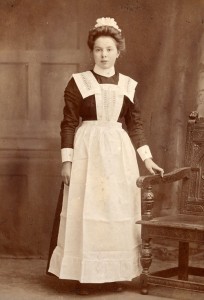
Where to find out more?
Firstly, you might want to take a look at the hand-out that I made for the talk at Kingston University: Careers in Archives hand-out
The hand-out contains a list of links to places that will give you more information, but two of the most comprehensive guides are:
The Archives and Records Association
Prospects
If you have any more questions, we’d be happy to answer; just leave a comment below, or email: Hidden-Lives-Revealed@childrenssociety.org.uk
![A boy who was in the care of The Children's Society over 100 years ago. Modern photograph by: Wellcome Trust | Thomas S.G. Farnetti]](http://www.hiddenlives.org.uk/blog/wp-content/uploads/2015/06/C0107829_resize1-300x200.jpg)

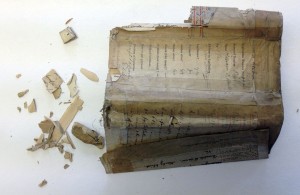
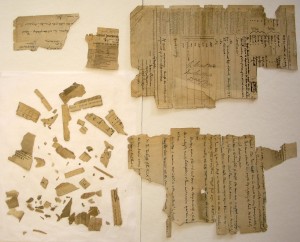
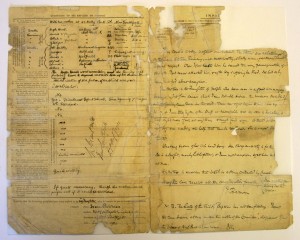
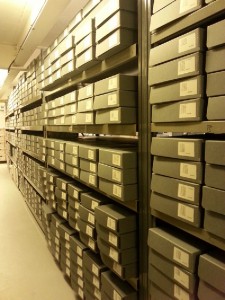
![Girls at St. Nicholas’ Hospital and Special School, Pyrford, Surrey. Three are in wheelchairs. [1915] Girls at St. Nicholas’ Hospital and Special School, Pyrford, Surrey. Three are in wheelchairs. [1915]](http://www.hiddenlives.org.uk/blog/wp-content/uploads/2015/03/p0001554-small-300x276.jpg)
![Girls at St. Nicholas’ Orthopaedic Hospital and Special School, Pyrford, Surrey; with a kid goat third from the right [c1910s] Girls at St. Nicholas’ Orthopaedic Hospital and Special School, Pyrford, Surrey; with a kid goat third from the right [c1910s]](http://www.hiddenlives.org.uk/blog/wp-content/uploads/2015/03/p0000061-small-300x212.jpg)
![Group photo of a teacher and ten girls, one of whom is in a wheelchair and another is using a crutch; St Nicholas’ Orthopaedic Hospital and School, Pyrford, Surrey [1917] Group photo of a teacher and ten girls, one of whom is in a wheelchair and another is using a crutch; St Nicholas’ Orthopaedic Hospital and School, Pyrford, Surrey [1917]](http://www.hiddenlives.org.uk/blog/wp-content/uploads/2015/03/p0000071-small-300x214.jpg)
